Radiology Facing a Global Shortage
Specialty affected by COVID-19, aging population and demand for imaging
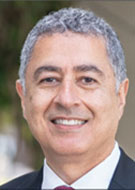
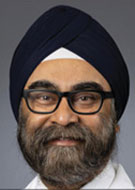
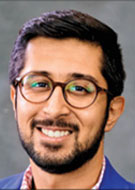
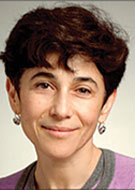
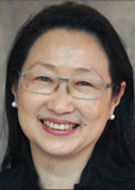
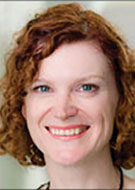
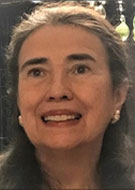
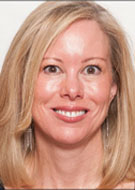
A convergence of factors, including increasing demand for imaging studies and COVID-related burnout, is exacerbating a global shortage of radiologists.
An aging population, increased Medicare enrollment and too few radiology trainees amounts to a triple threat, according to Vahid Yaghmai, MD.
“The demand for imaging is outpacing what we’re doing on the training side,” said Dr. Yaghmai, professor and chair of radiological sciences at the University of California, Irvine. “The number of radiologists in the workforce is not growing as fast as the population and the demand for imaging.”
Aging Population Increases Imaging Needs
According to the World Health Organization, the proportion of the world’s population over 60 years of age will be 22% by 2050, nearly double that of 2015.
“The older population requires more imaging,” said Harprit S. Bedi, MD, vice chairman of radiology education at Boston University School of Medicine.
Unfortunately, in the U.S., the Medicare population has significantly outpaced the number of radiologists entering the field in recent years. In his study presented at RSNA 2021, Aditya Khurana, MD, reported that the growth of the Medicare population outpaced the diagnostic radiology (DR) workforce by about 5% from 2012 to 2019. And there doesn’t seem to be a clear source of replenishment, as from 2010 to 2020, the number of DR trainees entering the workforce increased just 2.5% compared to a 34% increase in the number of adults over 65.
“The significant increase in Medicare beneficiaries and relative stagnation in DR providers serving the Medicare population could strain the supply and demand balance in the delivery of imaging services,” said Dr. Khurana, an incoming radiology resident at the Mayo Clinic.
Radiology Affected by Trainee Positions
By all accounts, radiology residency spots remain highly competitive, according to Anna Rozenshtein, MD, president of the Association of the Program Directors in Radiology.
“From a training perspective, the way to address a shortage of radiologists would be to increase the number of radiology resident positions,” said Dr. Rozenshtein. “We must fight to expand the pipeline.”
To that end, the U.S. House of Representatives introduced the Resident Physician Shortage Act of 2021 to address nationwide physician shortfalls by bolstering the number of Medicare-supported residency positions across all medical specialties. The proposal would support an additional 2,000 positions each year from 2023-2029 for a total of 14,000 positions. The bill has been referred to the subcommittee on health.
“This legislation, if enacted, would be a big step forward, with a couple of caveats: radiology residencies would need to be prioritized, particularly in the areas of the country experiencing the greatest shortage of radiologists,” Dr. Rozenshtein said.
Beyond increasing the number of residency positions, the best way to keep the pipeline of radiologists filled is to start recruiting in medical school, according to Evelyn Lai Ming Ho, MBBS, MMed, past president of the College of Radiology Academy of Medicine of Malaysia, Kuala Lumpur.
“We need to start at the medical school level to stimulate interest in radiology as well as show that the radiologist is not sequestered in a dark reporting room but is a visible part of a health care team,” said Dr. Ho, a member of the RSNA News Editorial Board. “Unfortunately, in Malaysia and many parts of the world, the demand to specialize in radiology is still greater than the availability of training positions.”
“The demand for imaging is outpacing what we’re doing on the training side. The number of radiologists in the workforce is not growing as fast as the population and the demand for imaging.”
VAHID YAGHMAI, MD
Shortages Felt Across the Globe
Adding more trainee spots is imperative, according to Sarah Vinnicombe, FRFR, lead breast radiologist at the Gloucestershire NHS Foundation Trust in the U.K.
“There’s absolutely a well-recognized shortage of radiologists in the U.K.,” she said. “It’s not a new problem but it’s become particularly acute in the last few years.”
Europe has 13 radiologists per 100,000 population but in the U.K., the rate is only 8.5 per 100,000.
Dr. Vinnicombe agrees that outreach to medical students is vitally important to increase the number of radiologists.
“Exposure of medical students to radiology early on in their training is important to create awareness of the specialty and, perhaps, an interest in one of the many subspecialties,” Dr. Vinnicombe said. “In the U.K., it is crucially important to introduce radiology residents or trainees to breast radiology to address the shortfalls in this area and avoid a backlog of breast imaging.”
In the meantime, to help ease the burden, Dr. Vinnicombe suggested that the government could make it easy for newly retired radiologists to return to work in a part-time role.
“There’s a huge amount of experience and expertise in these early retirees,” she said. “We should be using this fantastic workforce.”
In Malaysia, the physician to population ratio has been improving. However, the radiologist to patient ratio has been growing at a slower pace.
“For radiologists, we are about 30 radiologists per million population and the target is to increase that number to 50 by 2030,” Dr. Ho said. “We also have an uneven density of radiologists in large cities and the more densely populated and developed west coast of Peninsula Malaysia and major cities throughout all the states.”
The struggle to encourage radiologists to practice in more rural areas is a challenge in countries across the globe.
“There are enough radiologists available to meet the demand for imaging in large Brazilian cities,” according to Maria Helena S. Mendonça, MD, assistant professor at Santa Casa de Misericórdia de São Paulo in Brazil. “However, the distribution of professionals is uneven among all the Brazilian states and for this reason some parts of the country face a lack of radiologists.”
COVID-19 Changed the Workforce
The stress and burnout from COVID-19 has affected both trainees and seasoned radiologists, causing some to opt for early retirement. Additional attrition is expected as an estimated two in five physicians will reach retirement age over the next decade.
Much as Dr. Vinnicombe recommended in the U.K., Jennifer Kemp, MD, vice chair of quality and operations at Colorado University (CU) in Denver, said one strategy for combatting the shortage would be for physicians transitioning to retirement or in other in-between phases to come back into the radiology workforce.
“We need to get creative with job opportunities to keep people engaged,” she said. “When we advertise our open positions as hybrid, we garner more applicants. There’s no reason why some reading cannot be done at home.”
For the field of radiology, the acceptance of remote reading will be one of the long-lasting effects of the pandemic.
“Before 2020, we didn’t know if clinicians would be open to remote work or if radiologists would be as productive from home,” Dr. Bedi said. “But COVID-19 exposed what was possible.”
The ability to offer the flexibility of working remotely and a good work-life balance bode well for the future of radiology. Radiologists can each contribute to alleviate the shortage, according to Dr. Mendonça.
“I believe more trainees will be interested in the wonderful career that is radiology if we demonstrate how rewarding the specialty is,” she said. “We can motivate ourselves to teach radiology residents and set an example of leadership while continuing to learn from our colleagues, enjoy a life dedicated to study and science, and show compassion and outstanding care to our patients.”
For More Information
Read previous RSNA News stories about radiologist shortages:
- International Radiology Societies Tackle Radiologist Shortage
- Radiologist Shortage in the U.K. Continues to Deepen